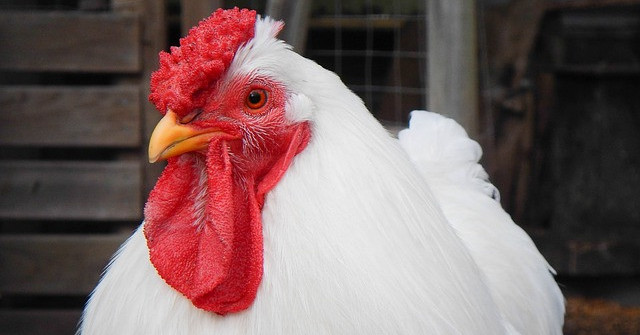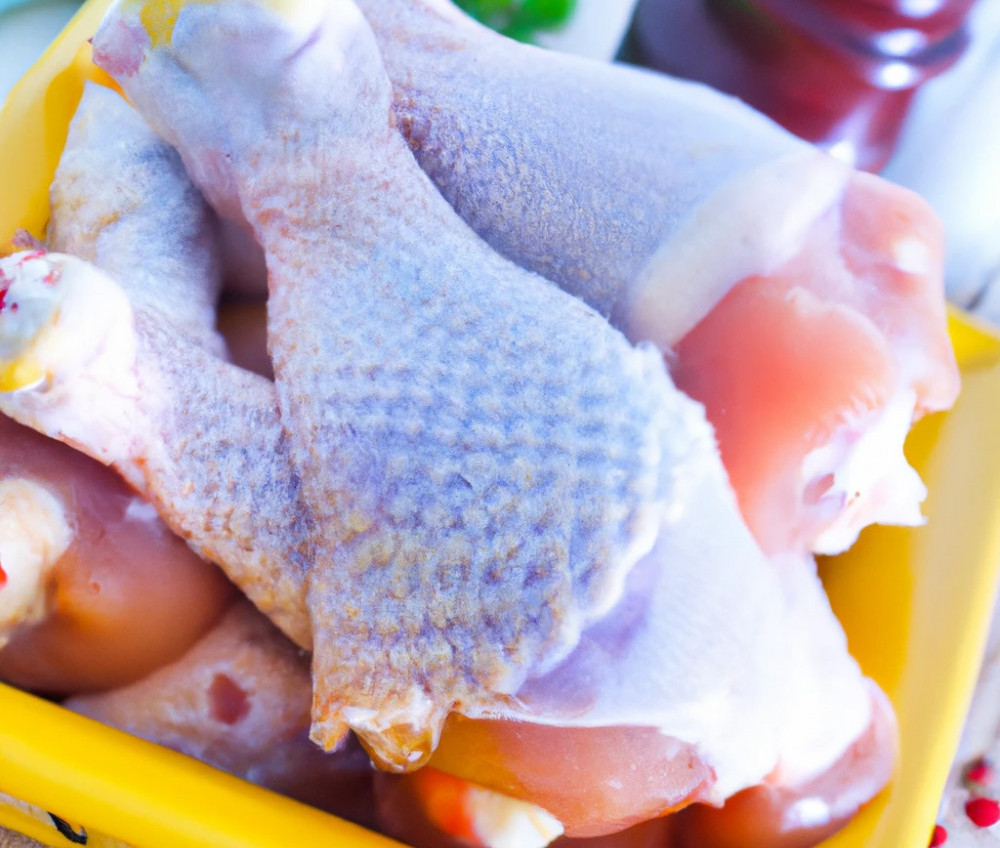One day earlier this year, in the spring, I decided to stop by the local tractor supply to look at the baby chicks that they had for sale. I had already purchased some chicks for the year, but I never tire of watching the little ones running around in their brooders. There were two birds that were taking a pummeling from their brooder mates, so in spite of the fact that I didn’t need any more chickens, I bought the injured ones (Light Brahmas) to nurse back to health. I succeeded!
These two came back to life with no problem. Except for one thing… they were not Light Brahmas. They were Cornish Rocks. How they did grow – It wasn’t long before they were twice the size of the other chicks. I had to learn how to raise meat birds fast. This is what I learned.
What Is a Meat Bird?
Some folk find the term meat bird to be a bit vulgar. Broiler seems to be a nicer, friendlier way to put it. Either way you say it, a broiler is a bird that has been specifically bred to gain the most weight in the shortest amount of time possible so that you can have fresh chicken as soon as possible.
Not to be confused with some dual-purpose birds like Rhode island Reds and Barred Rocks, which lay eggs and are good for the table, meat birds are typically a hybrid of some sort. The Cornish variety of chickens inherently have good breast and leg genes, so when you see Cornish Rock chicks like I had, you can expect a fast growing plump bird that will be ready for the table in as little as 8 weeks.
If that seems like a long time, consider that a laying hen doesn’t start producing eggs until around week 16, or twice as long as it takes for a meat bird to mature.
Most stores that sell chicks have a description of what the various breeds are best used for:
- Egg color
- Prolific or moderate layers
- Meat birds
- Bantams or full size
Or if you’re like me, you just want to save the day and be a hero chick rescuer and find out later on what you rescued. Be prepared to be surprised.
Brooding
When the chicks first hatch, they are all about the same size. It doesn’t take long to notice a difference between the broilers and the layers. Meat birds grow twice as fast as non-meat birds. They grow faster and they eat and drink more. You will want to keep an eye on food consumption and waste. Water is not as much of a concern in the waste department, but you will want to keep raising the height of the feed bin of the broilers so that they can reach it without tossing it around.
When they are baby chicks, brooder space is no different for meat birds than it is for layers. As they grow, you may have to add additional feeders and watering buckets to accommodate their quick rate of growth.
When considering how much feeding and watering space is necessary, simply eyeball the chicks as they grow, and estimate the amount of linear space they will need to sidle on up to the trough. If you have 12 chicks at an inch-and-a-half wide, you’re going to need at least 18 inches of trough space so they can all drink or eat at the same time.
Housing
A good broiler feed from your local farm store is recommended as meat birds need a high protein mix to allow them to grow at the speed necessary to fulfill their destiny.
As far as keeping the broilers isolated from the rest of the flock on the range, or keeping them in a housing area, boxed in at all times, I believe in live and let live; let them do their idea of ranging. My Cornish Rocks were so fat and lazy at a month old that they would manage their way out of the coop only to spend the rest of the day moving in four-foot increments around the building before laying down again. Water must be brought to them when they are out like that.
Broilers need about three square feet in the coop. Like I said, they really don’t move much. They become so heavy so quickly that their legs simply can’t support long periods of standing.
I am happy to help with research on various products. This is what I have found. As an Amazon Associate I earn from qualifying purchases.
If you want to really get into raising meat birds, you will need to build, or buy a coop separate from your layers coop so that they can be fed their own special mix, kept from too much exercise, and given longer periods of light each day. The more they are awake, the more they eat, and the faster they grow. Done in this fashion, you could have fresh chicken in as little as seven weeks.
A Decision To Make
Well, you got those meat birds for a reason. We have become far removed from the subsistence folks from days of old. A lot of the skills that were common on the small farms of yesteryear have given way to being able to navigate a shopping cart with proficiency.
To obtain fresh chicken meat from your meat birds, you will need to kill, bleed, pluck, and butcher them. So you must decide whether to do the work yourself, or have someone else do it. There are commercial butcheries that will do it for you, or their are individuals who have no problem with the work. I know a guy who will comm to your home to do the butchery work.
If the idea of raising your own meat birds is to get the whole experience, then let’s move on.
Butchering Your Meat Birds
Butchering at home is not hard, but there are steps to follow. I’m not going to go into detail here. This article is about how to raise meat birds fast. I have another article that gives step by step instruction for home chicken processing. For now, I will tell you what you need to butcher so you can be ready when the time comes. You will need:
- A sharp boning knife
- A butchering cone to keep the chicken stable during the bleeding process
- A hose with running water, or something similar (lots of blood)
- A table to butcher on
- Garbage bags. You’ll want to remove entrails and such immediately
- An ice chest for the butchered and rinsed chickens
- A scalding tank to loosen feathers for plucking
That’s it for now. We’ll get into the steps in my next article.
Healthy Choices
Learning how to raise meat chickens is like any other learning process. It just takes time and persistence. The whole process may seem a little barbaric in this day and age, but there are some things to consider. You raised your meat birds. Do you know where the chickens at the store came from? …how they were raised? …how they were handled, or processed? ,,,what they were fed? When you consider these factors, you can feel good about raising your own meat chickens.
It’s a healthy choice.
Thanks for reading. If you have any questions for me, please leave them below.



